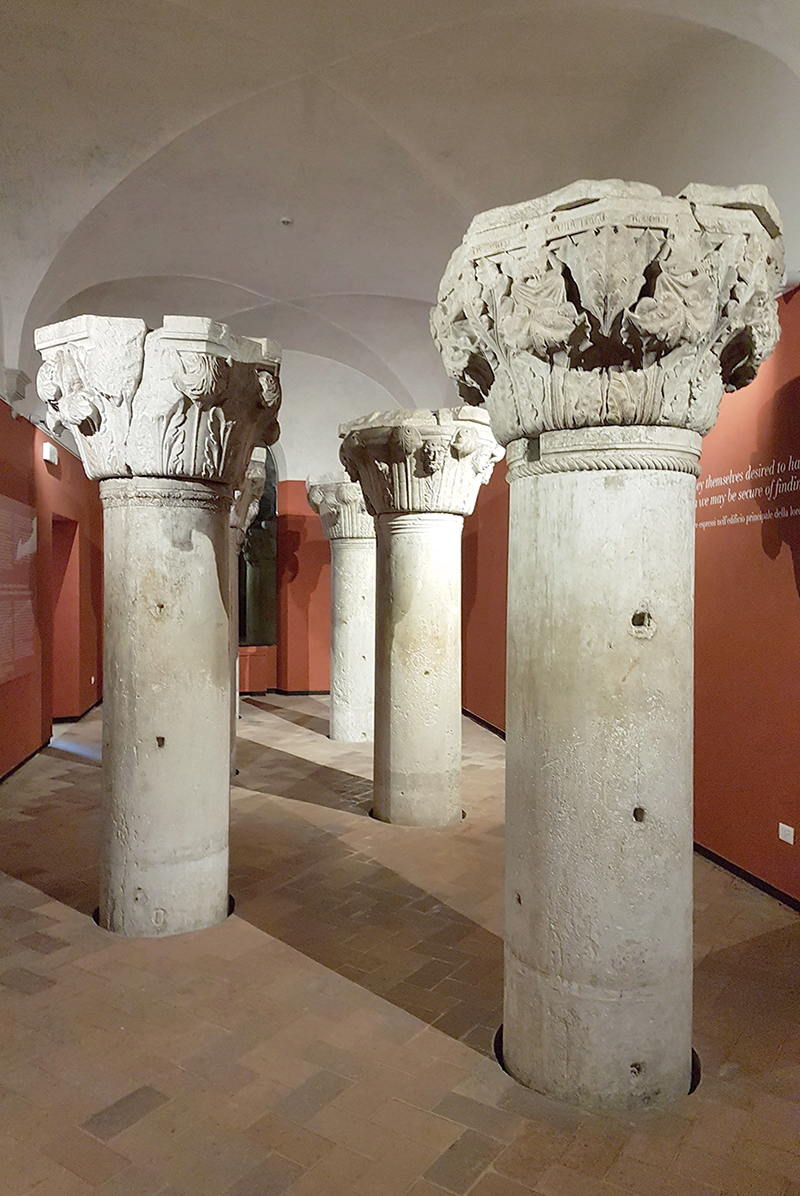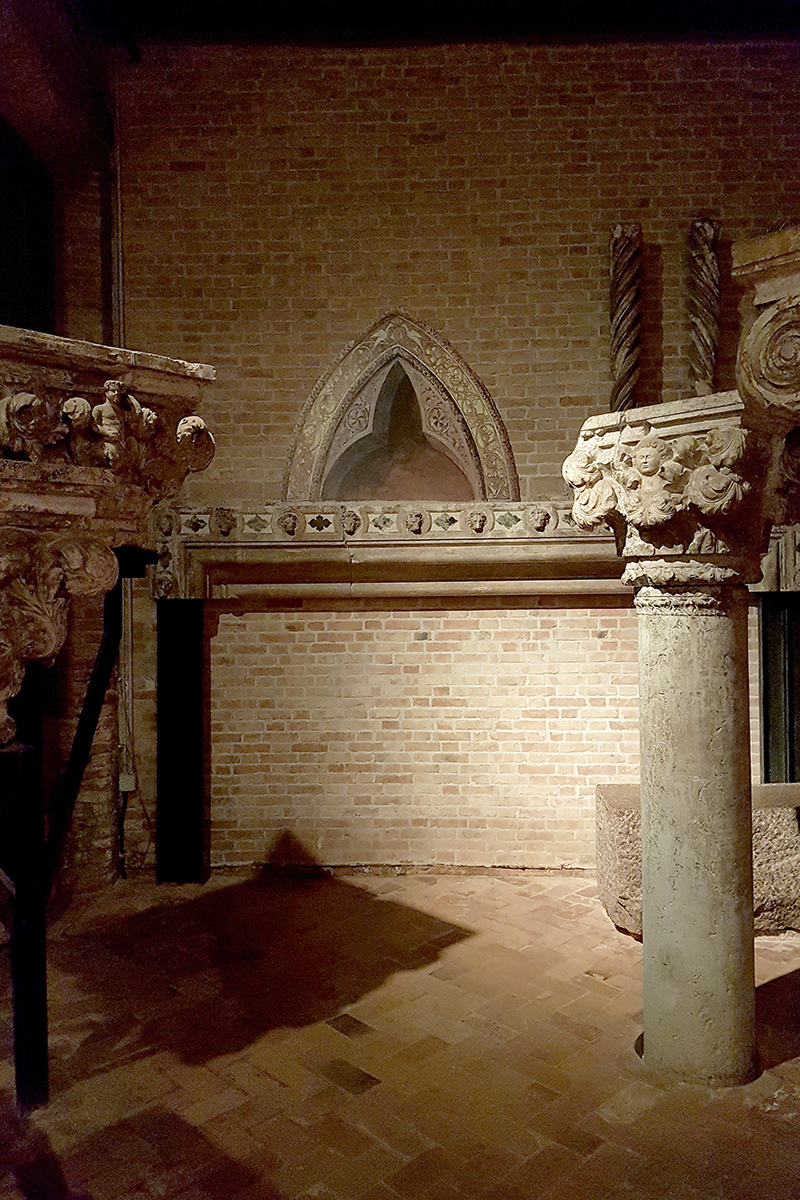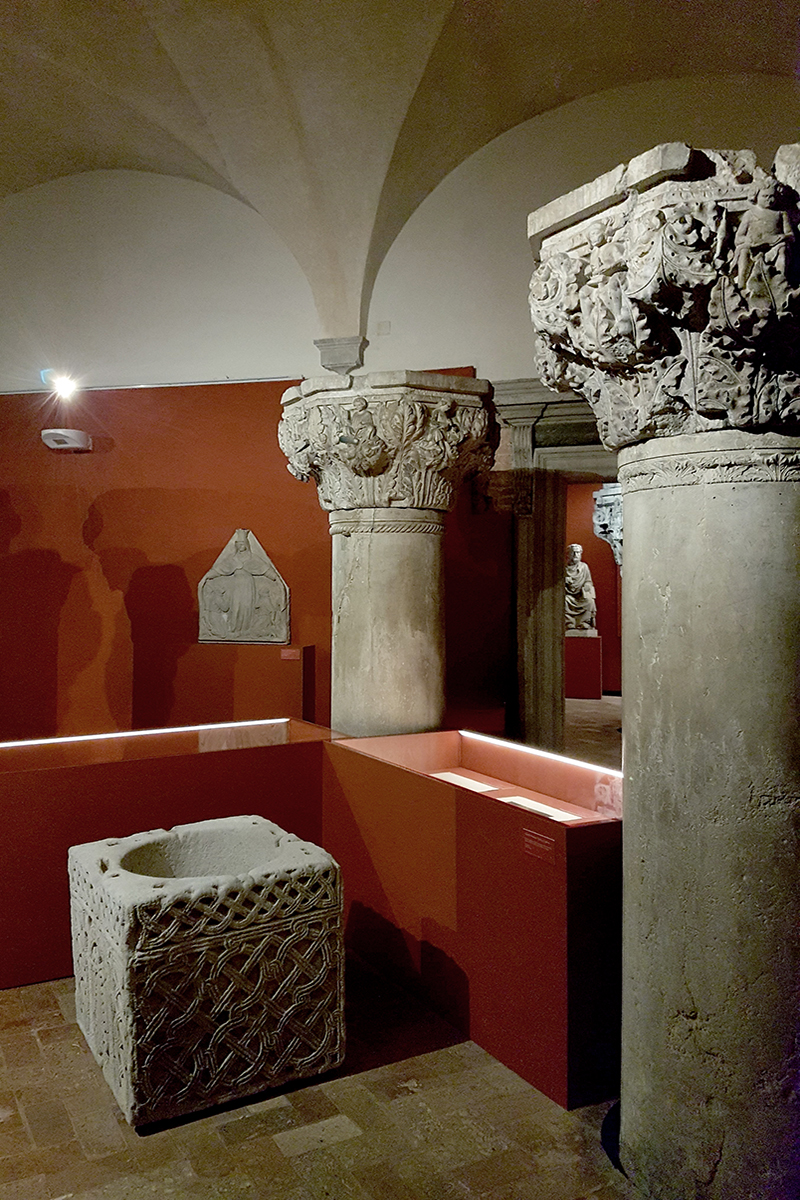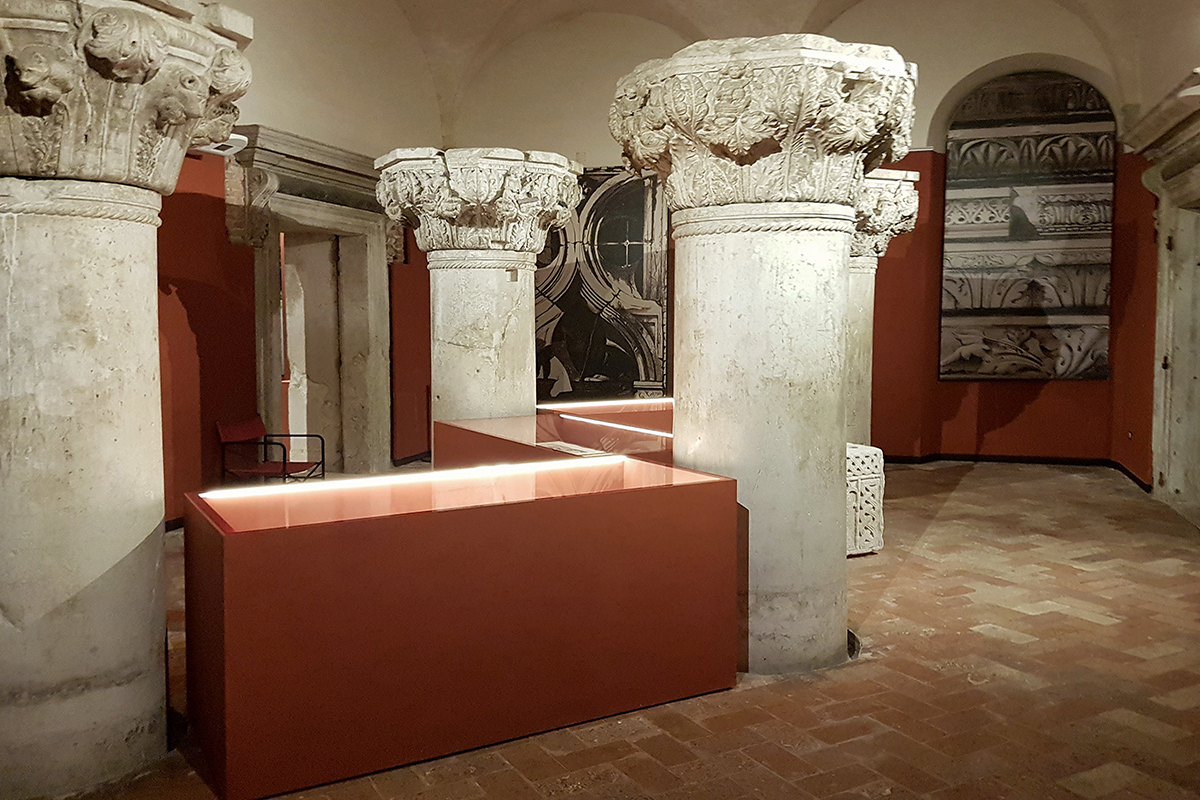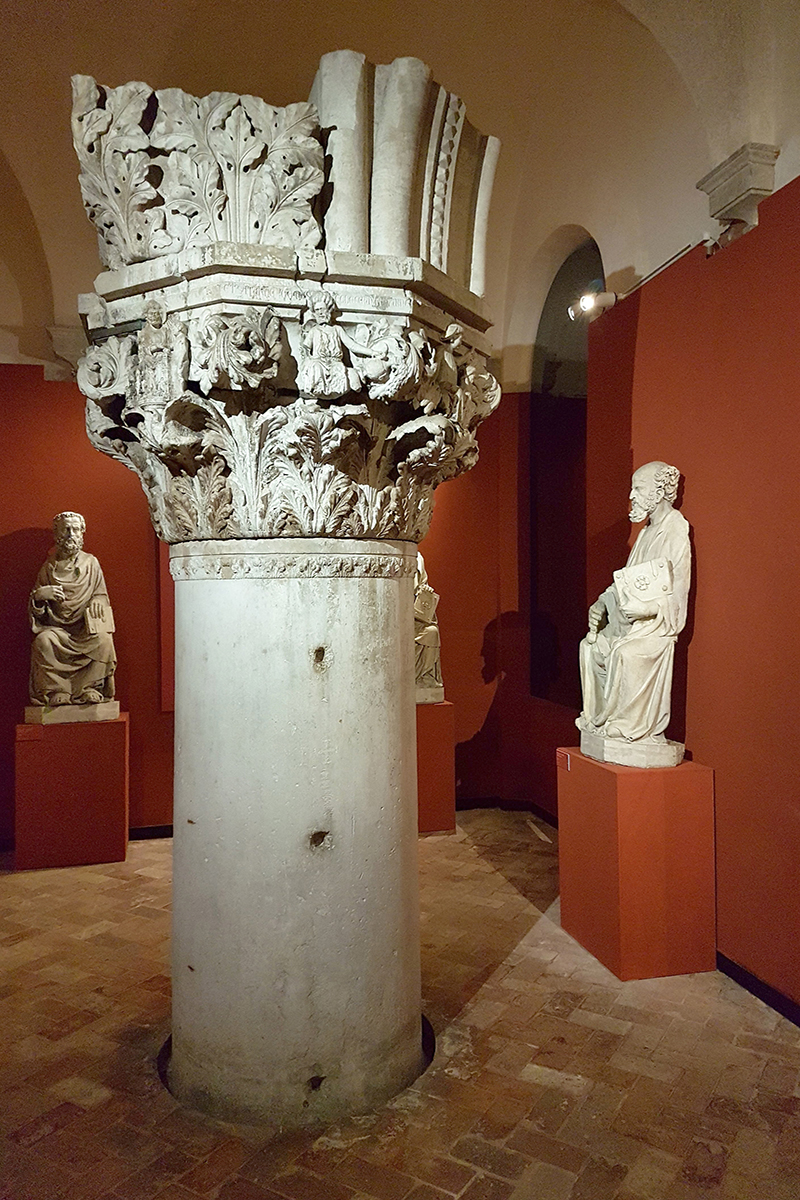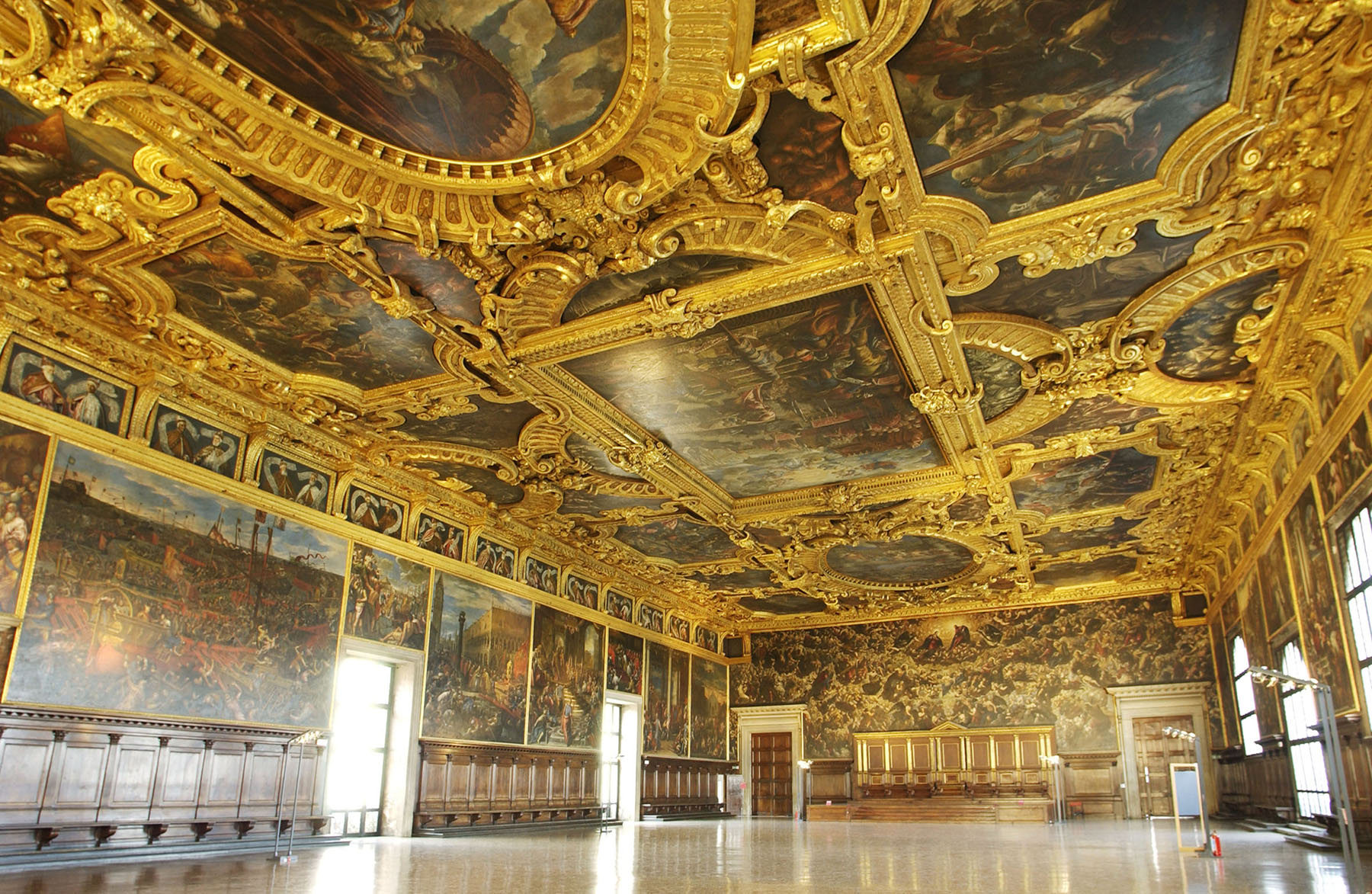
Museo dell’Opera
The Opera, also known as the Fabbriceria or Procuratoria, was historically a kind of “technical office” responsible for the maintenance and renovation of the Doge’s Palace. Over the centuries, it preserved numerous historical documents and remnants of its activity.
Starting in 1875, a major restoration plan was launched, focusing on the two facades and the capitals belonging to the ground-floor arcade and the upper loggia. A total of 42 ancient, precious, and fragile capitals were replaced with replicas, while the originals were restored during the last decade of the 20th century.
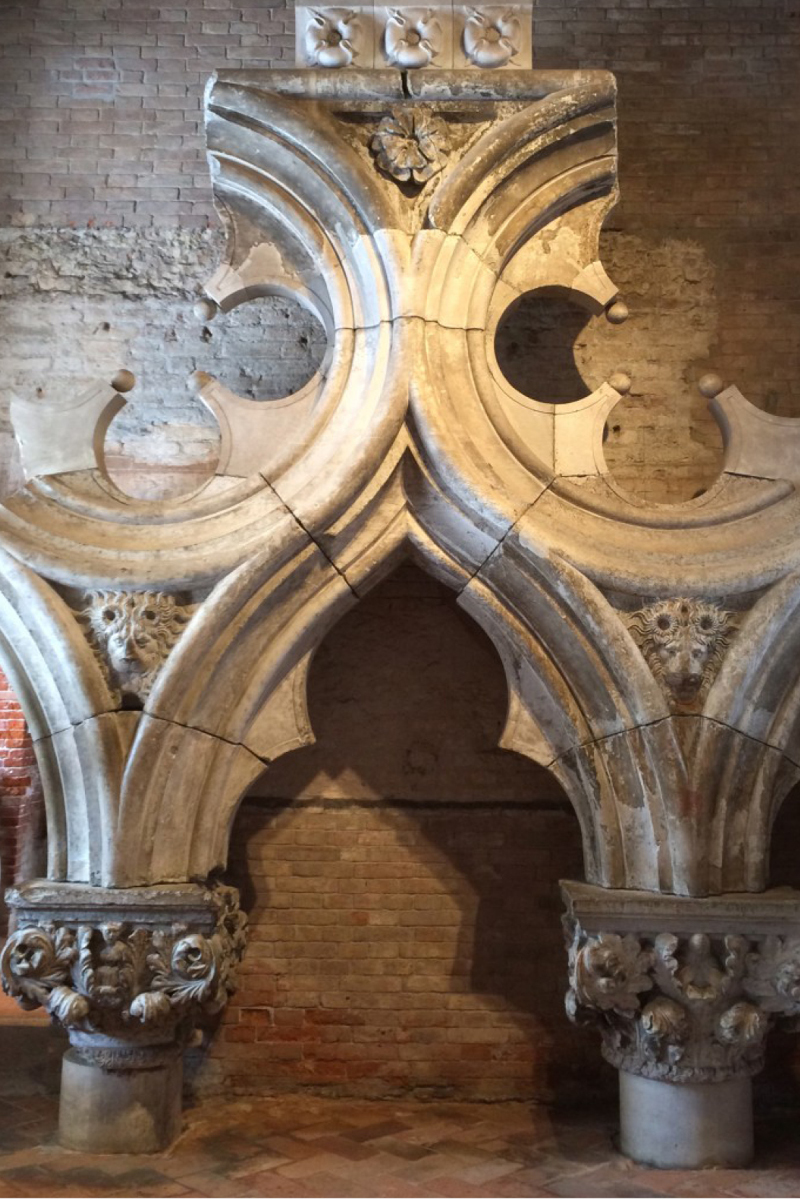
Today, these capitals, along with other sculptures and reliefs, are on display in the Museo dell’Opera, which houses significant architectural elements from the Palace.
The carved decorations of the capitals tell allegorical and moral stories, blending the sacred and the profane, history and legend, astronomy and astrology, following a typically medieval manner.
The Museum offers a fascinating journey through six rooms, exploring this epic poem in stone, peopled by men, women, children, animals, plants, zodiac signs, myths, symbols, vices and virtues.
